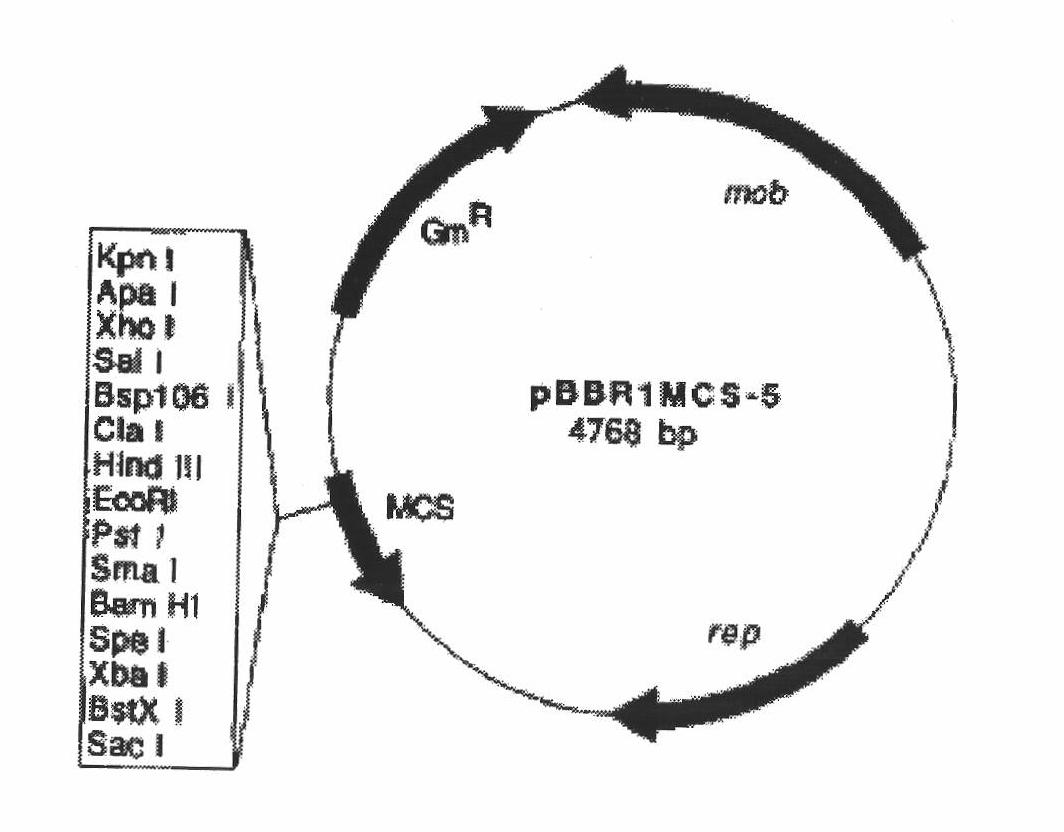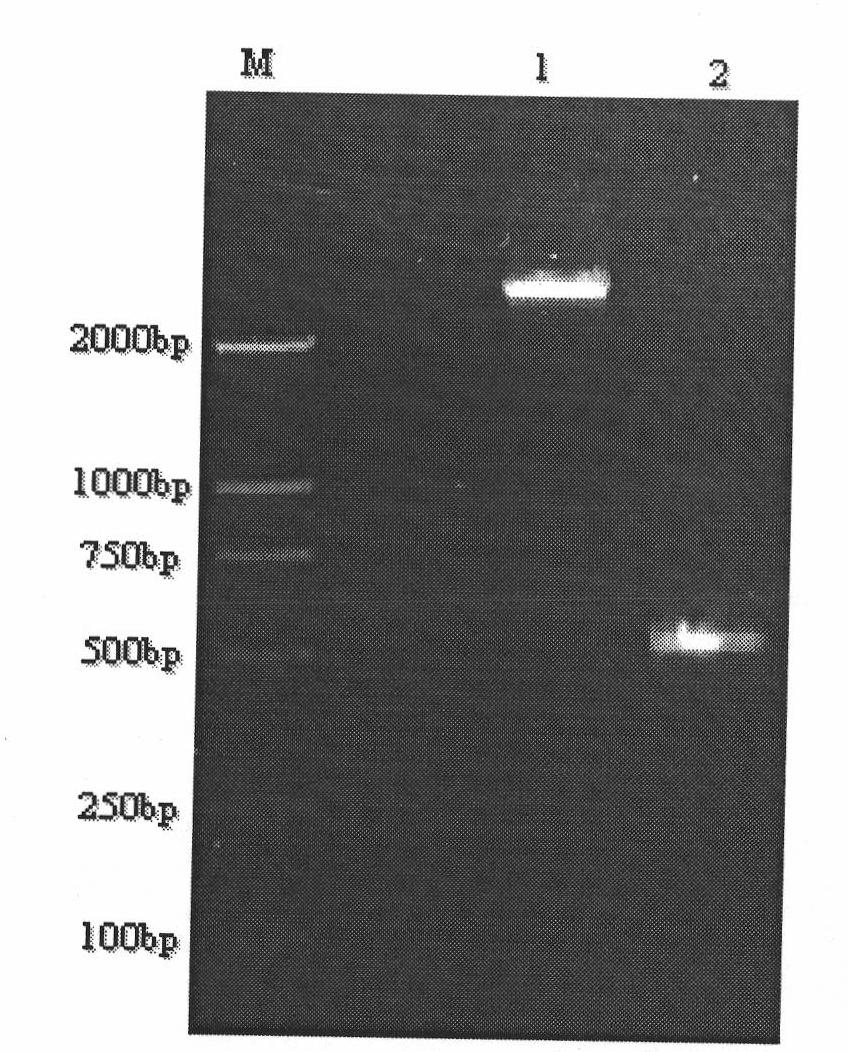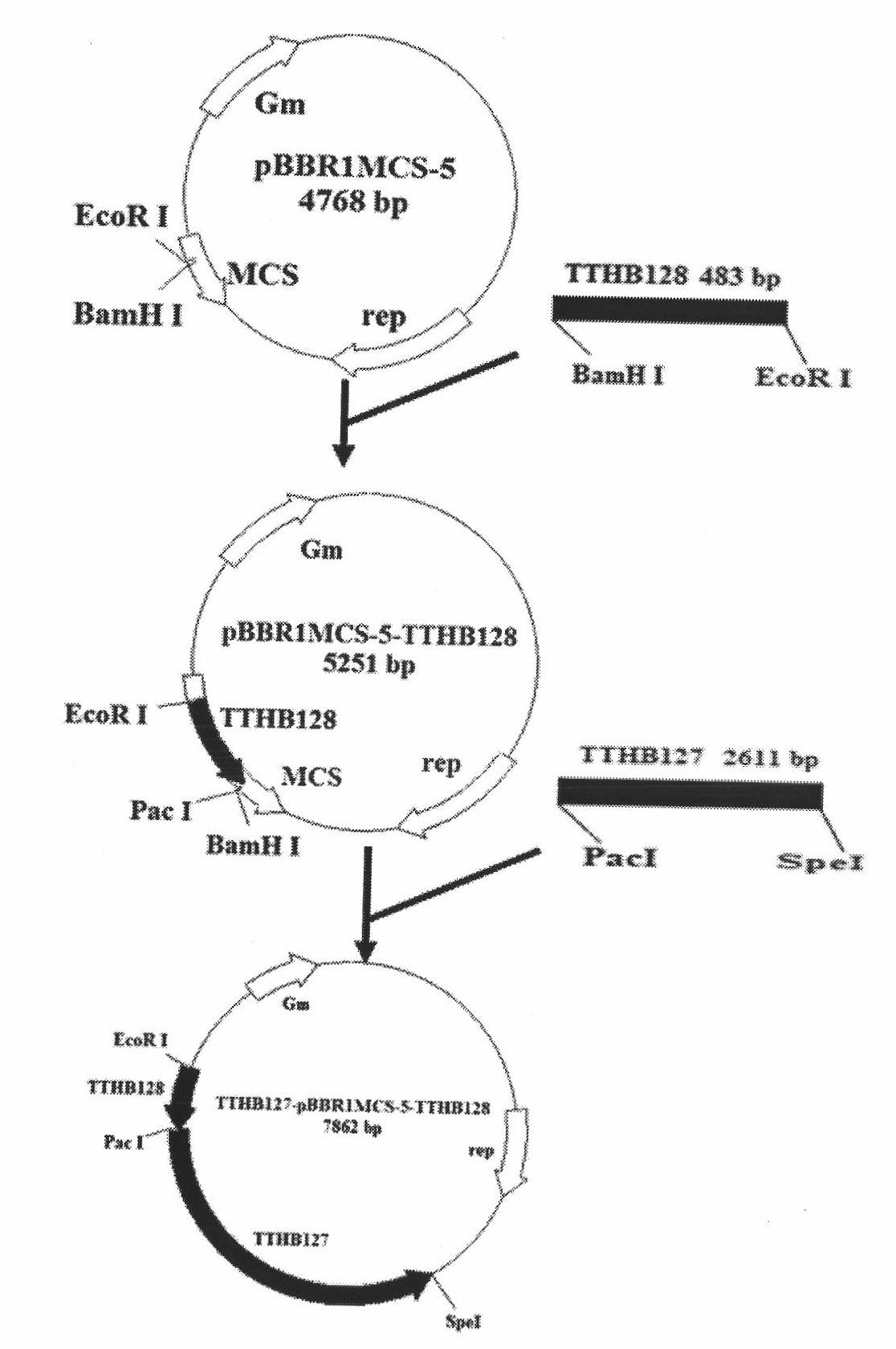Gene engineering bacterium capable of both tolerating high-concentration As (Arsenic) (III) and oxidizing As (III) and application thereof
A technology of genetically engineered bacteria, AS-02, applied in the field of genetic engineering and environmental protection, can solve the problems of inability to obtain, not practical, and cannot guarantee the screening of microorganisms, etc., and achieve good environmental protection value, good stability, and genetic stability. good effect
- Summary
- Abstract
- Description
- Claims
- Application Information
AI Technical Summary
Problems solved by technology
Method used
Image
Examples
Embodiment 1
[0045] Example 1 Acquisition of trivalent arsenic oxidase gene in Thermus thermophilus HB8
[0046] A. Extraction of plasmid (pTT27) in Thermus thermophilus HB8
[0047] Inoculate Thermus thermophilus HB8 glycerol bacteria into 400ml LB culture, culture at 75°C, 200rpm for 2-3 days, collect the sludge, centrifuge at 4,500-6,000×g, 4°C for 10min, completely discard the supernatant, refer to Germany for the extraction process The instructions for the extraction of large fragment plasmids provided by Macherey-Nagel ( Xtra Midi Plus).
[0048] B. PCR amplification of target genes TTHB127 and TTHB128
[0049] According to the gene sequence (SEQ No.1, SEQ ID No.2) of trivalent arsenic oxidase (including large and small subunits) in Thermus thermophilus HB8 published in NCBI GeneBank, use the primer design software DNAStar to design The primers for amplifying the large and small subunit gene sequences from the plasmid pTT27 of Thermus thermophilus HB8 were synthesized by Shanghai...
Embodiment 2 3
[0060] Example 2 The recombination of the large and small subunit gene fragments of trivalent arsenic oxidase and the expression vector pBBR1MCS-5
[0061] The recombination of the large and small subunit gene fragments of trivalent arsenic oxidase and the expression vector pBBR1MCS-5 is detailed in image 3 , the specific implementation steps are as follows:
[0062] A. PCR amplification of large and small subunit gene fragments with primers with restriction sites
[0063] A primer with a restriction site (the restriction site is underlined) was designed according to the multicloning restriction site on the expression vector pBBR1MCS-5.
[0064] The primers with restriction sites corresponding to the large subunit gene sequence are:
[0065] Upstream primer: 5'-
[0066] CC TTAATTAA TGCGAACTGACAGGATGATTTCTCATGGCGCTCATTCCCG
[0067] TAG-3' (SEQ ID No.7)
[0068] Downstream primer: 5'-GG ACTAGT TTAGTCAAACTTGTTCTGCTGC-3' (SEQ ID No. 8)
[0069] Using the extracted plas...
Embodiment 3
[0082] Embodiment 3 takes pseudomonas putida AS-01 as the construction of the genetically engineered bacterium of host bacterium (three-parent conjugation method)
[0083] (1) Cultivation of donor bacteria E.coli DH5α (TTHB127-pBBR1MCS-5-TTHB128)
[0084] Inoculate a single colony in 5 mL of LB liquid medium containing gentamicin (60 mg / L), culture overnight at 37°C, inoculate 0.5 mL of bacterial liquid into 3 mL of LB liquid medium containing the same antibiotic, and continue culturing at 37°C for 4 -5h.
[0085] (2) Cultivation of auxiliary bacteria E.coli WD803 (pRK2013)
[0086] Inoculate a single colony in 5 mL of LB liquid medium containing kanamycin (50 mg / L), culture overnight at 37°C, inoculate 0.5 mL of bacterial liquid into 3 mL of LB liquid medium containing the same antibiotic, and continue culturing at 37°C for 4 -5h.
[0087] (3) Cultivation of recipient bacteria P.putida AS-01
[0088] Inoculate a single colony in 5 mL of LB medium, and incubate at 30°C for...
PUM
| Property | Measurement | Unit |
|---|---|---|
| Tolerance | aaaaa | aaaaa |
Abstract
Description
Claims
Application Information
 Login to View More
Login to View More - R&D Engineer
- R&D Manager
- IP Professional
- Industry Leading Data Capabilities
- Powerful AI technology
- Patent DNA Extraction
Browse by: Latest US Patents, China's latest patents, Technical Efficacy Thesaurus, Application Domain, Technology Topic, Popular Technical Reports.
© 2024 PatSnap. All rights reserved.Legal|Privacy policy|Modern Slavery Act Transparency Statement|Sitemap|About US| Contact US: help@patsnap.com










